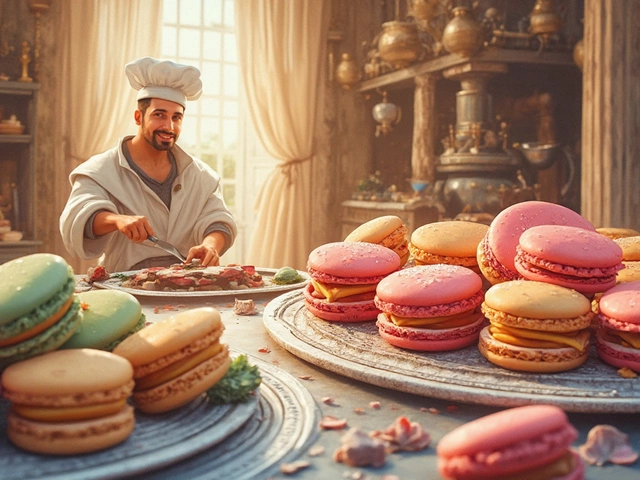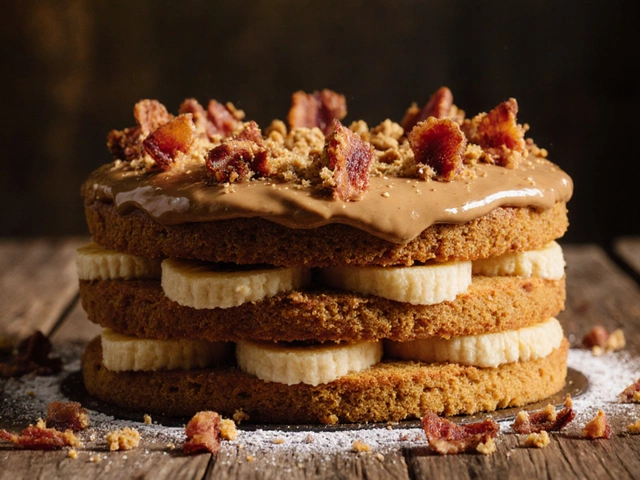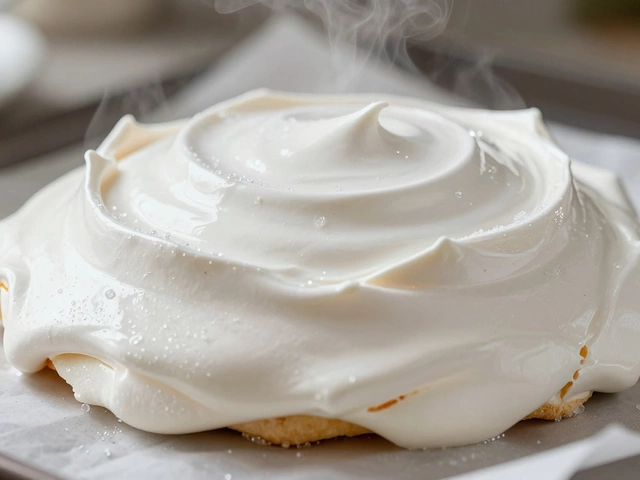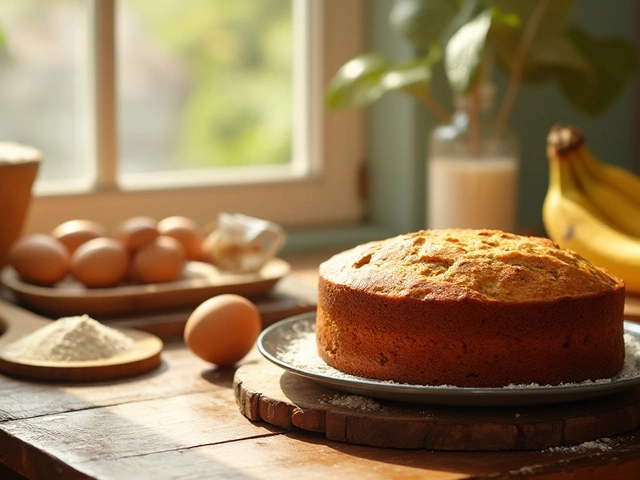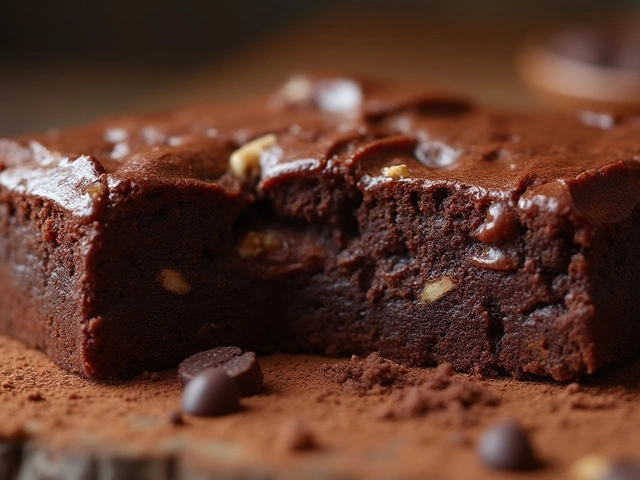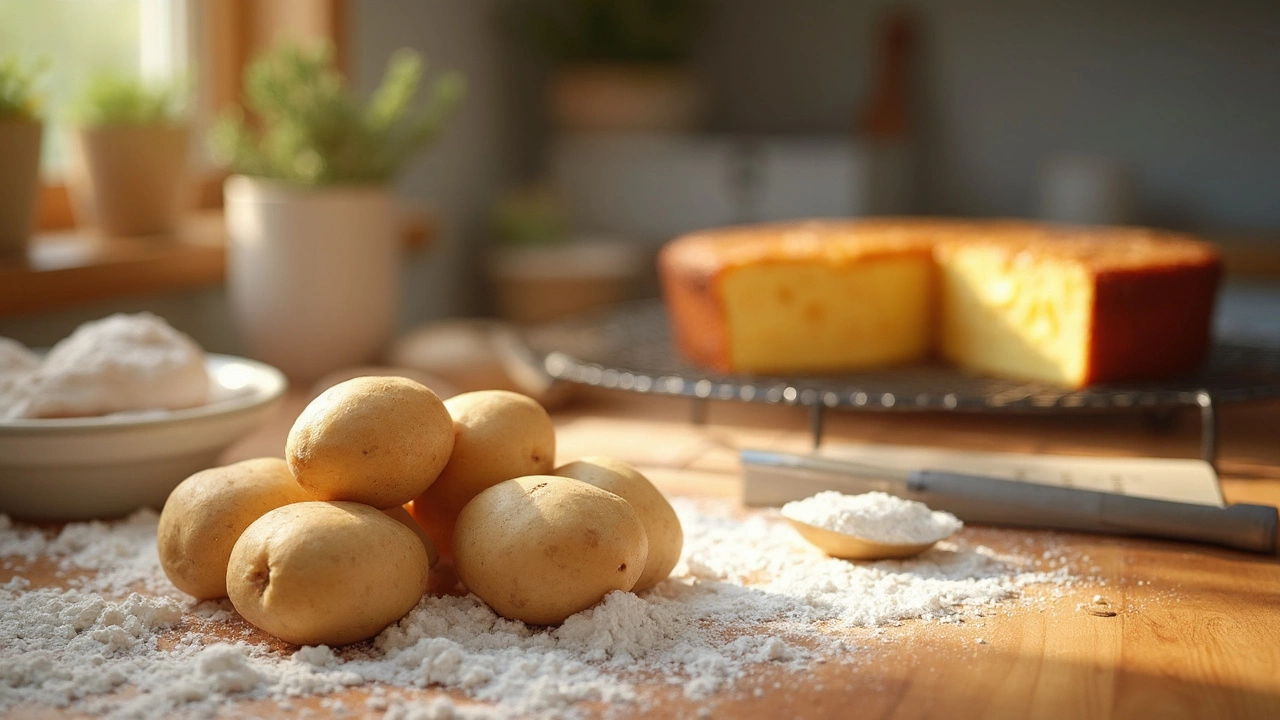
Potatoes land on almost every grocery list, but if you’re avoiding gluten, you might wonder if they’re still safe to toss in your cart. The short answer? Potatoes are naturally gluten-free—no secret wheat or rye hiding in that brown skin. It doesn’t matter if you like russets, reds, or fingerlings; none of them have gluten. Sounds simple, right? Well, mostly.
The trick comes in when potatoes end up in processed foods or baking mixes. If those spuds are sharing space or equipment with wheat or barley, a little gluten might sneak in. So plain potatoes are fine, but always check labels if you’re grabbing potato flour, mashed potato mixes, or ready-made potato cakes. Trust me, as someone who reads labels like it’s a superpower, it’s worth the extra thirty seconds.
- Potatoes at a Glance: Are They Gluten-Free?
- Potatoes vs. Wheat: What Makes Them Different?
- Potato Flour and Potato Starch in Baking
- Cross-Contamination: What to Watch Out For
- Potatoes in Gluten-Free Cake Recipes
- Handy Tips for Baking and Storing
Potatoes vs. Wheat: What Makes Them Different?
A lot of people lump potatoes and wheat together because both show up in baked treats. But in reality, they couldn’t be more different. First off, potatoes are a type of vegetable—actually a starchy tuber from the nightshade family. Wheat, on the other hand, is a grass and the main source of all those flours that cause trouble for anyone going gluten-free.
Here’s the key thing: wheat packs a big punch of gluten, the protein that gives bread its chew. Potatoes don’t have gluten, not even a speck. You can mash, bake, or fry them—no risk of gluten showing up from the spud itself.
- Potatoes: Mostly made up of water and starch. No gluten, ever. This makes them an easy go-to for gluten-free eaters.
- Wheat: Contains proteins called gliadin and glutenin—these are what form gluten when mixed with water and kneaded.
If you look at baking ingredients side by side, you’ll spot some big differences:
| Potatoes | Wheat | |
|---|---|---|
| Total protein per 100g | ~2g | ~13g |
| Contains gluten? | No | Yes |
| Main use in baking | Moisture, starch, structure in gluten-free cakes | Classic bread, cakes, cookies with chewy texture |
It’s not just about what’s missing—potatoes actually help give gluten-free cakes a moist, tender crumb. Wheat usually provides structure with gluten, but when you ditch the gluten and reach for a potato-based ingredient like potato flour or potato starch, you still get solid results. The bonus? Potato-based cakes often stay soft longer than wheat-based ones, so you don’t end up with dry leftovers.
Potato Flour and Potato Starch in Baking
If you’re diving into gluten-free cakes, you’ll run into potato flour and potato starch. They look almost identical, but don’t get them mixed up—they behave totally differently in your recipes. The key difference? Potato flour uses the whole potato, skin and all, dried and finely ground. Potato starch strips out everything but the white, powdery stuff that gives your cakes a tender crumb.
Let’s look at what each one does in your kitchen:
- Potato flour adds moisture and helps hold things together, making baked goods less crumbly. It’s got a bit of a potato taste, so a little goes a long way. If you use too much, your cake might come out dense or gummy.
- Potato starch is flavorless with a super smooth texture. It’s perfect for lightening up gluten-free cakes, cookies, or brownies. Adding it can make your cake fluffier and softer, especially when used with other gluten-free flours like rice or almond flour.
Bakers love both because they play nicely with other gluten-free ingredients. But here’s a heads-up: potato flour and potato starch are sometimes produced in factories that also handle gluten grains. Always check for a gluten-free label or certification, especially if you have celiac or a strong gluten reaction.
Here’s a quick cheat sheet if you need to swap them or work them into a cake recipe:
| Ingredient | Use in Cake Baking | Replace With |
|---|---|---|
| Potato Flour | Adds moisture, structure | Sorghum flour, sweet rice flour (but the result may vary) |
| Potato Starch | Lightens texture, adds softness | Cornstarch or tapioca starch |
If you’re experimenting, start small—try swapping 10-20% of your main gluten-free flour with potato starch and see what happens. If your cake turns out rubbery, cut back on the potato flour next time. Trust your taste and texture; your perfect gluten-free bake is just a tweak or two away.
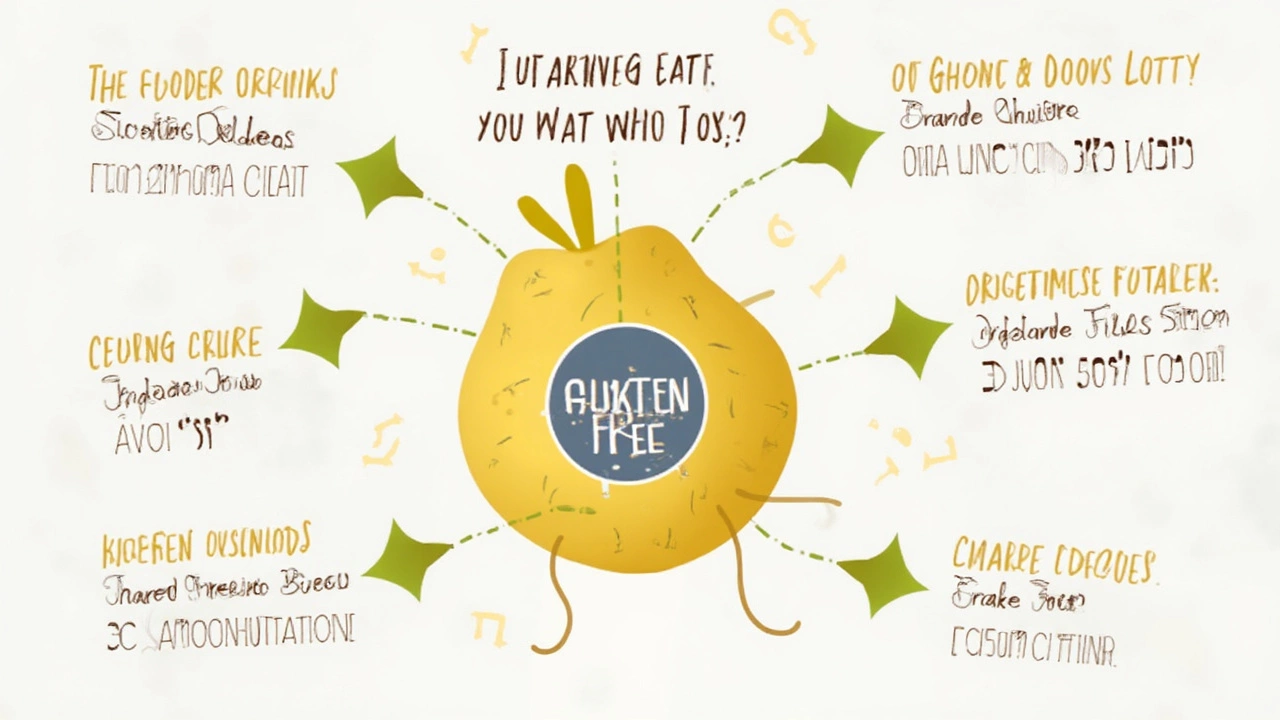
Cross-Contamination: What to Watch Out For
Even though potatoes are naturally gluten-free, cross-contamination is where things can get tricky fast. Picture this: you’re peeling potatoes on a cutting board that just had bread sliced on it. Even that dusting of crumbs could lead to gluten sneaking into your food. If you have celiac or a strong gluten intolerance, that tiny amount matters more than you think.
One study found that around 16% of naturally gluten-free packaged foods had measurable gluten levels due to cross-contamination. It isn’t just scaremongering—it happens all the time in home and restaurant kitchens.
Here’s where to pay extra attention when using potatoes in gluten-free cakes or other recipes:
- Always wash and peel potatoes yourself. Don’t buy pre-peeled or pre-cut if you’re not sure they’re labeled gluten-free.
- Use a separate set of utensils and cutting boards only for gluten-free cooking, especially if you share a kitchen with wheat eaters.
- Double-check blenders, mixers, and baking pans for crumbs or residue. A quick wipe isn’t enough—run them through the dishwasher if you can.
- When buying potato flour or starch for baking, pick brands certified as gluten-free. Contact the company if you’re not sure about their processing lines.
Restaurants are a whole other game. Always ask staff how potatoes are prepped—sometimes they’re fried in oil that’s been used for breaded foods, which means instant gluten cross-contact.
| Spot Check | Safe? |
|---|---|
| Home-peeled potatoes, clean prep | Yes |
| Pre-cut potatoes in store (not labeled gluten-free) | No |
| Restaurant fries in shared fryer | No |
| Baking with certified gluten-free potato flour | Yes |
Bottom line: trust labels that actually say gluten-free. Be picky about where and how you prep. My cat Whiskers would say it’s like keeping tuna safe from sneaky paws—if you don’t watch every step, somebody will get a bite they shouldn’t!
Potatoes in Gluten-Free Cake Recipes
If you haven’t tried baking with potatoes in your gluten-free cakes, you’re in for a treat. Potatoes aren’t just safe—they actually make your cakes moist and fluffy. That little bit of starch keeps everything tender, cutting through the dryness that sometimes creeps into gluten-free cakes.
You’ll see potatoes show up in two big ways: mashed and as potato flour or potato starch. Mashed potatoes? Yep. You can fold in cold, plain mashed potatoes into chocolate or lemon cake batters. It might sound weird, but it helps hold things together, especially since most gluten-free flours don’t. Potato flour and potato starch also work great as binders or for a bit of bounce in the crumb.
Here’s how potatoes fit right into your baking routine:
- Moisture Booster: Potatoes stop cakes from feeling crumbly or gritty. About 1/2 cup mashed potatoes will blend right in without a trace of potato flavor.
- Better Texture: Potato starch gives cakes a soft, velvety bite—similar to the results of wheat flour but without gluten.
- Easy to Blend: Potato flour mixes well with rice flours, almond flour, and tapioca starch for reliable results.
Pro bakers often add a small amount of potato starch to vanilla sponge cakes to get that classic lift. If you swap wheat flour for potato flour, use a lighter hand—it’s more absorbent, so you’ll want to add a bit more liquid.
One cool thing: Potato flour locks in moisture for days, so your cake won’t dry out if you keep it on the counter. Plus, cakes using potato ingredients are generally easier to slice and decorate.
To keep things super clear, here’s a quick look at potato add-ins for gluten-free cake baking:
| Potato Form | Common Use in Cakes | Special Benefit |
|---|---|---|
| Mashed Potato | Batters for chocolate, spice, or fruit cakes | Adds moisture & binding |
| Potato Flour | Part of flour blend for vanilla or yellow cakes | Improves crumb & shelf life |
| Potato Starch | Light sponges, chiffon cakes | Crisp edges, soft crumb |
Potatoes are simple, cheap, and totally open up a bigger world for gluten-free baking. If you’re feeling adventurous, start with a classic chocolate cake—just add a spoonful or two of potato starch and taste the difference. Even Whiskers would agree, potato cakes are a win.
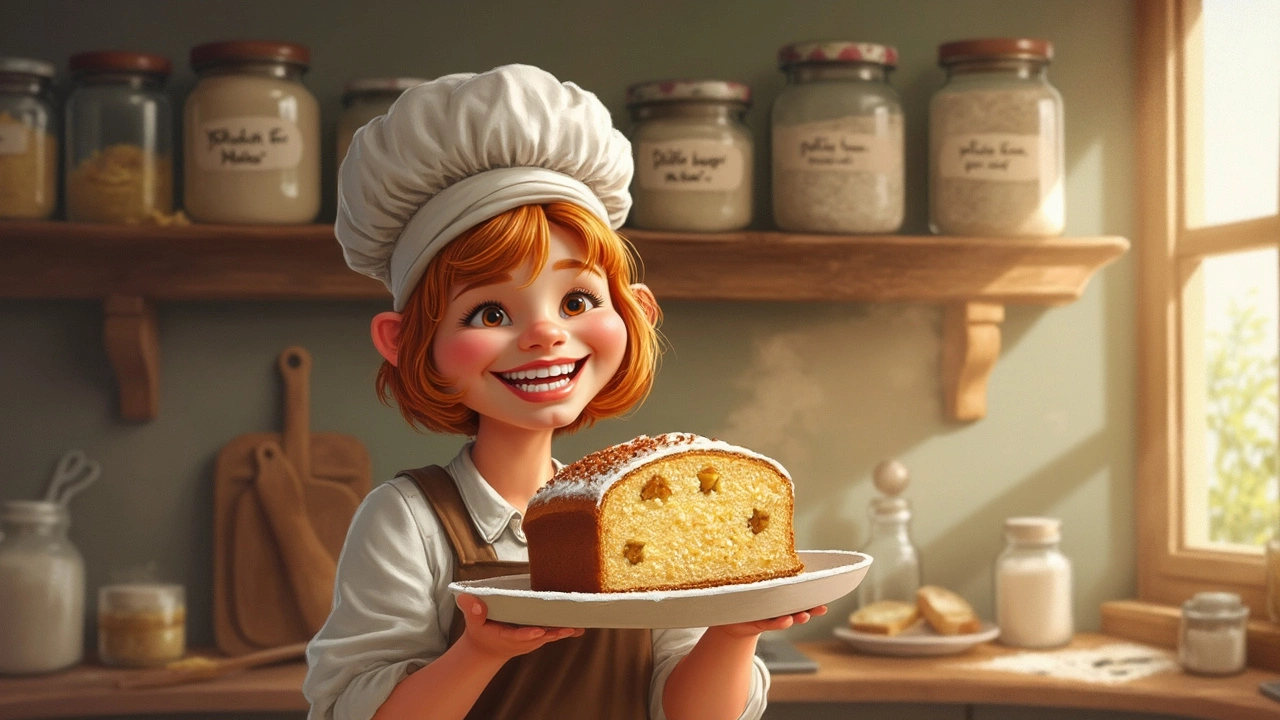
Handy Tips for Baking and Storing
If you want perfect results with potatoes and gluten-free cakes, a few simple tweaks can make a big difference. First, always use certified gluten-free potato flour or potato starch if you’re baking for someone with celiac or serious gluten issues. Cross-contamination is sneaky—your flour shouldn’t come from a factory where wheat dust floats in the air.
When whipping up a cake, potato flour and potato starch aren’t the same thing. Potato flour is heavier, like a dense sponge, while potato starch is great for light, fluffy cakes. If your cake feels a bit gummy, try using potato starch next time. But don’t swap them one-for-one unless the recipe says so.
Here are some practical tips for storing and baking with potatoes and their products:
- Store whole potatoes in a cool, dark spot—think pantry, not the fridge. Cold makes them turn sweet and weird in cakes.
- Keep potato flour and starch in airtight containers. Humidity clumps up the powder and can spoil it fast.
- Double-check for added wheat or flavorings if you buy frozen mashed potatoes or baking mixes.
- Use baked and cooled mashed potatoes in cake batter for extra moisture—try about 1/2 cup per standard recipe.
According to the Celiac Disease Foundation,
"Potatoes and potato flour are naturally gluten-free, but only products labeled gluten-free are safe from contamination."So, when in doubt, look for that label.
If you’re wondering about shelf life, here’s a helpful snapshot:
| Product | Storage Time |
|---|---|
| Whole potatoes | Up to 2 months (pantry) |
| Potato flour | 6 months (airtight, cool place) |
| Potato starch | 12 months (airtight, cool place) |
| Mashed potatoes (leftover) | 3-5 days (fridge) |
Bake in small batches the first time you try potato flour in a gluten-free cake—it absorbs more liquid than you’d expect. And if you’re like me and always have extra potatoes lying around, remember, leftover mashed potatoes freeze well (and come in handy for your next baking experiment).

